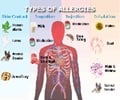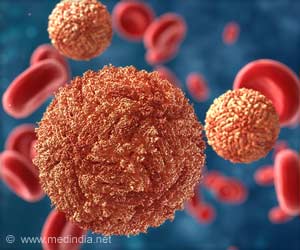The use of an anti allergy drug over the span of 40 years reduced the tumor growth in the human pancreas and also resulted in improved effect of chemotherapy.
Researchers at the University of Texas M. D. Anderson Cancer Center suggest that the use of an anti allergy drug over the span of 40 years reduced the tumor growth in the human pancreas and also resulted in improved effect of chemotherapy.
The Journal of the National Cancer Institute issued on Dec.20 reported that a combination of chemotherapy and the drug cromolyn is three times more effective than just the administration of chemotherapy agent gemcitabine.The finding may lead to a treatment advance for patients with pancreatic cancer, believed to be the most lethal of all cancers. More than 95 percent of patients diagnosed with the disease die from it, and half of those deaths occur in the first six months after diagnosis.
"Our goal is to offer longer life to these patients, and the combination of these two agents may well do that," says the study's lead author, Craig Logsdon, Ph.D., a professor in the Department of Cancer Biology.
Logsdon is working with physicians at M. D. Anderson to prepare for a clinical trial. Although cromolyn is off patent and widely available, it has been used only as a topical agent (through an inhaler, nasal spray and eye drops), so the research team is studying how to deliver the drug internally.
"Cromolyn seems to reduce survival mechanisms in pancreatic cancer cells enough that when gemcitabine is added, the chemotherapy is more effective," Logsdon says. "This is good, because chemotherapy normally has very little effect in patients."
The JNCI study demonstrates in mouse models of human pancreatic cancer that the cromolyn-gemcitabine combination reduced cancer growth by 85 percent compared to control animals, Logsdon says. "Cromolyn used alone actually had a good effect on reduction of tumors compared to control animals, which surprised us," he adds. It reduced tumor growth by 70 percent, compared to growth reduction of 50 percent when gemcitabine was used as a single agent, compared to control animals.
Advertisement
Logsdon discovered the cancer-stimulating protein, determined how it triggers tumor growth and spread, and identified cromolyn as an inhibitor. "Through serendipity and basic science sleuthing we may now have something that helps patients," he says.
Advertisement
Logsdon searched for genes that produced proteins secreted only by cancer cells, which would then loop around and act on the cancer cell through a receptor on the cell surface. "That way, we could have two potential drug targets - the secreted protein and the receptor," he said.
Out of a long list of such genes, Logsdon and his research team selected one called "S100P" because it is a member of the large S100 gene family, some of which produce secreted proteins and some of which are associated with other cancers. Further work showed that S100P over-expression was very specific to pancreatic cancer; the protein was not found in normal pancreatic cells. "It is important to embryonic development, but no one knows its physiological role in adult biology," he says.
By using gene-silencing techniques, Logsdon found that when the protein is disabled, cancer growth is slowed. "S100P plays a role in tumor development because it causes cancer cells to grow faster, survive better, and be more invasive," he says.
Logsdon found that S100P interacts with a receptor known as "RAGE" which also plays a role in diabetes, arthritis and Alzheimer's disease. If RAGE is blocked in pancreatic cancer cells, addition of synthetic S100P to the tumor does not accelerate growth.
While Logsdon was defining S100P in pancreatic cancer, a Japanese research team working on allergies ran an experiment to see which proteins "stuck" to anti-allergy drugs, including cromolyn. Several members of the S100 family did. Logsdon then discovered that the drug also bound to S100P. He applied cromolyn to laboratory pancreatic cancer cells, and found that tumor growth was slowed. A larger effect was seen when the chemotherapy agent gemcitabine was combined with cromolyn.
Logsdon suspects that cromolyn may have other anti-tumor effects, a theory which he is currently testing. "For me this is pretty thrilling," he says. "In a relatively short time, we have gone all the way from discovering a molecule to preparations for a clinical trial."
Source-Eurekalert
KOM











